Because there are several cooking utensils on the market, this article explores ten advantages of silicone bakeware over other alternatives.
What is Silicone Rubber?
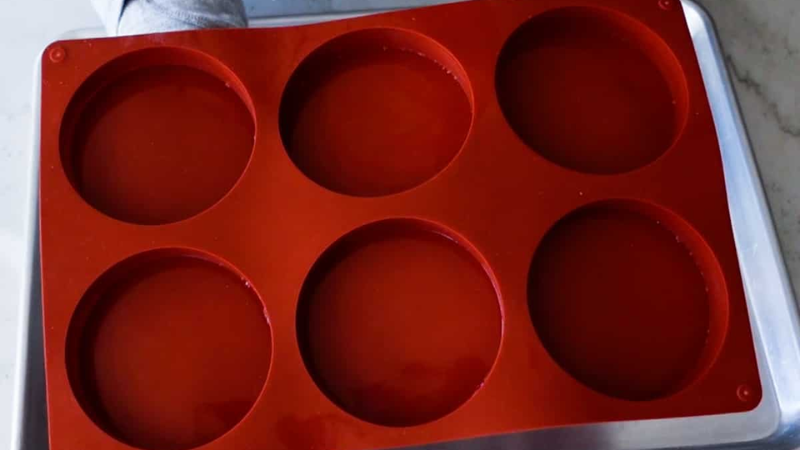
Silicone rubber is an elastomer made from silicone. This man-made compound combines natural elements, including silicon, oxygen, hydrogen, and carbon. Silicone rubber has properties that make it ideal for use in high-heat applications. Furthermore, silicone rubber is widely used to manufacture cookware and bakeware because of its durability, chemical resistance, and eco-friendliness compared to plastic.
Furthermore, due to its versatility, silicone rubber is used in several applications besides food applications. This rubber is ideal for manufacturing cooking utensils, medical devices, sports goods, electronics, and automotive parts.
The Properties of Silicone Rubber
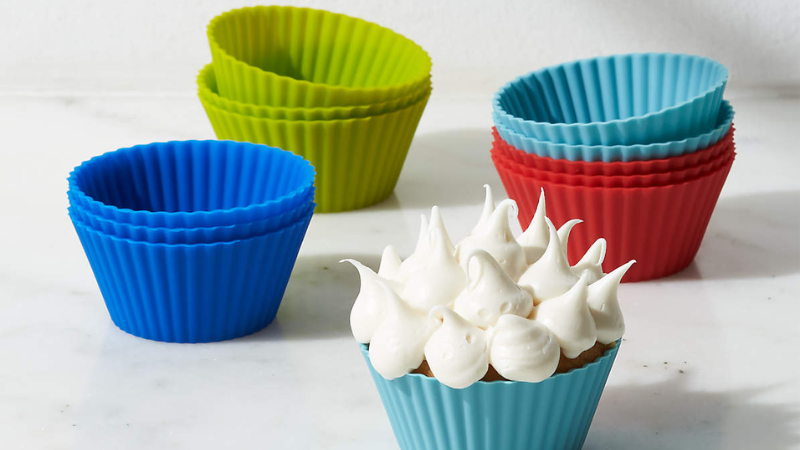
Silicone rubber has distinct properties that distinguish it as a high-performing elastomer. These properties include;
| Property | Detalis |
|---|---|
| Cold resistance | Silicone rubber remains elastic and retains its properties at temperatures as low as -60 to -70 degrees Celsius. Some reinforced silicone rubber products can even withstand cold temperatures up to -100 degrees Celsius |
| Heat resistance | The elastomer can withstand high temperatures of up to 150 degrees Celsius with no change in its properties. At 200 degrees Celsius, this rubber material can still retain its properties for up to 10,000 hours |
| Weatherability | Silicone rubber is durable and resistant to ozone, weather, and UV exposure |
| Moisture resistance | This elastomer does not experience any change in its mechanical or electrical properties on exposure to moisture. It has a 1% water absorption |
| Steam resistance | There is no deterioration in the properties of silicone on exposure to steam. However, on exposure to pressurized steam at temperatures exceeding 150 degrees Celsius, this rubber material breaks down |
| Oil resistance | Silicone rubber is resistant to oil at high temperatures |
| Chemical resistance | The elastomer is resistant to polar solvents, dilute acids, and bases. Although silicone swells in polar solvents like benzene, it returns to its normal size upon the removal of the solvent. However, the properties of this elastomer are greatly affected by exposure to strong acids and bases |
| Electrical insulation | Silicone rubber has a high resistance to electricity over a wide temperature range |
Send Your Inquiry Now!
Quality Meets Affordability. Inquire Now for High-Quality Products at Low Volumes.
The Benefits of Using Silicone Rubber Utensils and Bakeware
Silicone kitchen utensils offer numerous benefits, including the following;
1. They are heat-resistant
Silicone kitchen utensils can withstand higher temperatures. They can maintain their properties for hours without breaking down at temperatures up to 220 degrees Celsius. Consequently, they are ideal for use in the oven and grilling. Furthermore, silicone kitchen utensils are microwave-safe.
2. They are easy to clean.
You can easily clean your kitchen utensils in the sink. You only have to soak your utensils in warm soapy water. Afterward, wipe with a non-abrasive sponge and rinse. Furthermore, because silicone kitchen utensils are resilient, they are dishwasher-safe.
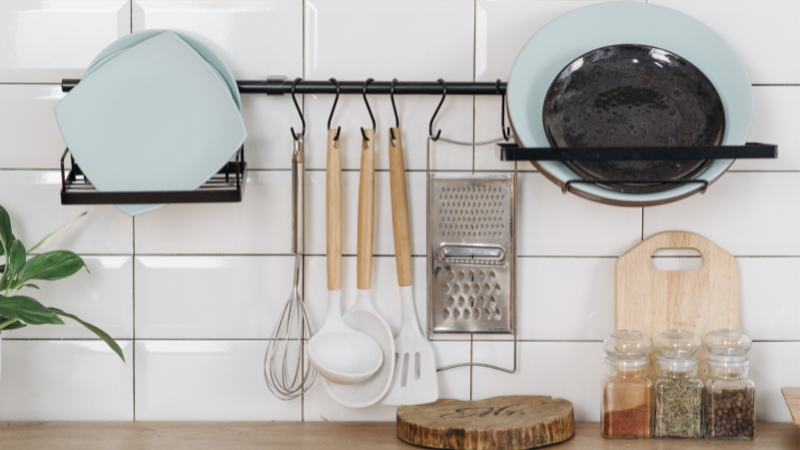
3. They are nonstick
Silicone bakeware is non-sticky. Therefore, before baking, you don’t have to grease the silicone pans with as much oil or butter. This material is consequently an excellent tool for eating healthier. In addition, extracting your food from silicone pans is much easier due to their non-stickiness
Unlike conventional nonstick cookware, silicone bakeware does not contain toxic chemicals that leach and contaminate food.
4. They are flexible and less likely to break.
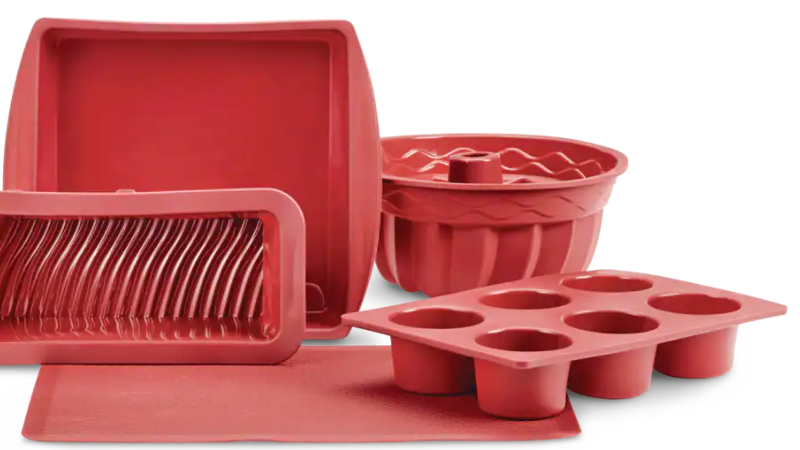
Silicone kitchen utensils are flexible and have a high rebound rate. Therefore, no matter how much you bend or flex them, these utensils will always return to their original shape. In addition, due to their flexibility, silicone pans are available in several unconventional forms, helping you bake muffins and cookies in attractive, fun, and different shapes.
Furthermore, despite their flexibility, silicone cooking utensils retain their shape, and you can store them for as long as possible.
5. They are durable and will last for years with proper care
This material is durable and can last as long as possible if you take good care. You can care for your silicone utensils by wiping them with a damp soft sponge and mild dish soap. It would be best if you also rinsed them with water and dry with a microfiber cloth.
6. The bright colors make them fun and festive for special occasions
Silicone kitchen utensils are available in several fun colors. You can incorporate these colors during special events to create a sumptuous and attractive food palette. In addition, silicone utensils always look new due to their vibrant colors

7. They are freezer-safe
Silicone cookware is also resistant to low temperatures. This material does not leach even if you use it to store food in your freezer. Furthermore, you can transfer your silicone utensil from the freezer to the microwave and vice-versa without any change in the properties of the material.
8. They preserve food to taste.
Food-grade silicone does not interact with your food and drinks because the material is inert. Therefore, this cookware preserves the flavor and taste of your food and beverages.
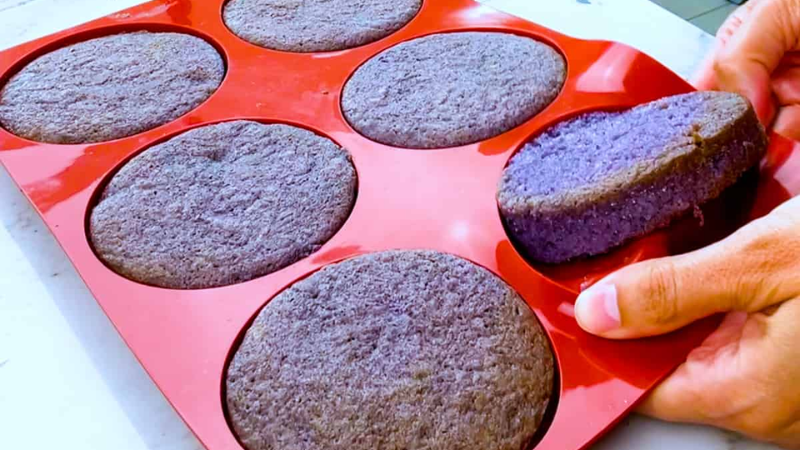
9. They are reusable
Paper cupcakes and muffin wrappers are single-use. However, silicon muffin pans are reusable for your baking needs.
10. They are cost-effective.
Although they cost a lot when you purchase them, silicone utensils are a worthy investment. In the long run, silicone utensils outlast traditional bakeware and non-stick pans, saving you money for a replacement.
Send Your Inquiry Now!
Quality Meets Affordability. Inquire Now for High-Quality Products at Low Volumes.
How to Choose Suitable Silicone Utensils and Bakeware?
Because of the cost of silicone utensils, several substandard products claim to be pure silicone. However, you can choose the best silicone cookware and bakeware by looking out for the following;
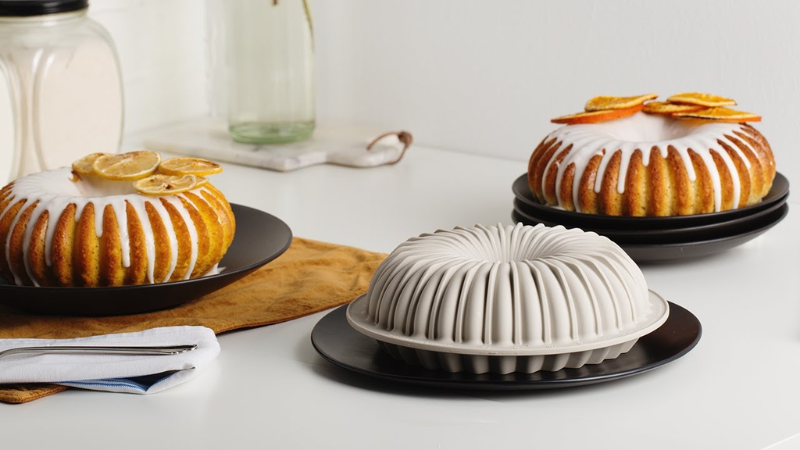
FDA Approval
The Food and Drug Administration (FDA) or a similar body grades and certifies silicone utensils. So before buying one, look out for the approval seal.
It is important to note that some manufacturers claim that their silicone bakeware is FDA-approved even though they produce substandard cookware. Therefore, it is best to purchase cookware from generally recognized brands.
Fillers and Additives
Substandard silicone bakeware is mixed with plastic fillers and additives to reduce costs. Unfortunately, these harmful chemicals lessen the quality of silicone utensils and leach into food. You can identify filler silicone cookware by its operating temperature and a bending test.
Usually, 100% silicone cookware can withstand cooking temperatures up to 220 degrees Celsius. If the cookware’s label indicates a temperature below this measure, it contains additives.

Furthermore, bending bakeware can also show if it has additives. 100% silicone is flexible and rebounds to its normal state. Impure silicone cookware will offer a series of white lines whenever you bend it. In addition, if the cookware price seems too good to be true, it most likely is.
BPA-free Silicone
Bisphenol A (BPA) is a common component of plastic containers and bottles. BPA is toxic to the human body. It is, therefore, best to look out for this component in your silicone cookware before making a purchase. 100% silicone cooking utensils are BPA-free
Send Your Inquiry Now!
Quality Meets Affordability. Inquire Now for High-Quality Products at Low Volumes.
Safety Tips for Using Silicone Utensils and Bakeware
Caring for your silicone cookware and bakeware ensures their longevity. You can care for your silicone cooking utensils by;
Cleaning
Because silicone hardly stains, it is easy to store this cookware without cleaning it properly. Unfortunately, debris can harbor bacteria, which can lead to food poisoning. You can wash your cooking utensils by soaking them in warm water and using dish soap. Avoid scrubbing the cookware with metal brushes to avoid scratching the surface.
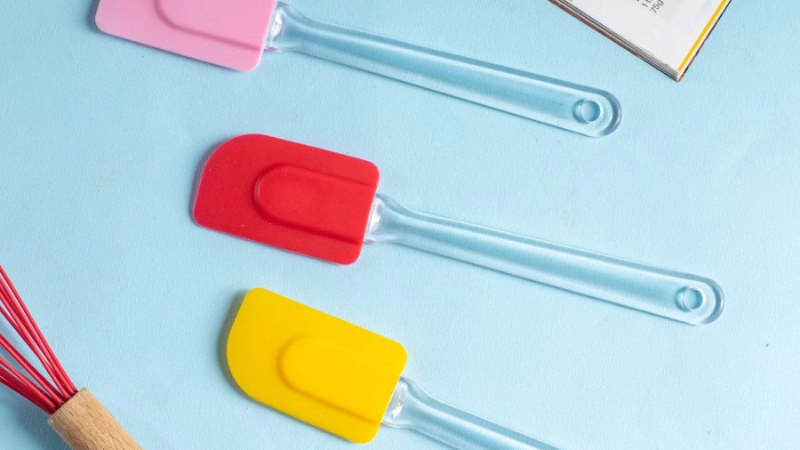
Avoid Using Knives
Knives can slice into silicone surfaces and damage them. Therefore, avoid slicing or cutting food in silicone bakeware.
Extreme Heat
Although heat-resistant, silicone breaks down into its components at extreme temperatures. Avoid using silicone utensils on direct heat surfaces like hot plates, stove tops, or grills.
Storage
After washing silicone cookware, dry it with a microfiber cloth. Moisture in your silicone utensils can breed bacteria and contaminate food upon subsequent use.
FAQs about Silicone Utensils and Bakeware
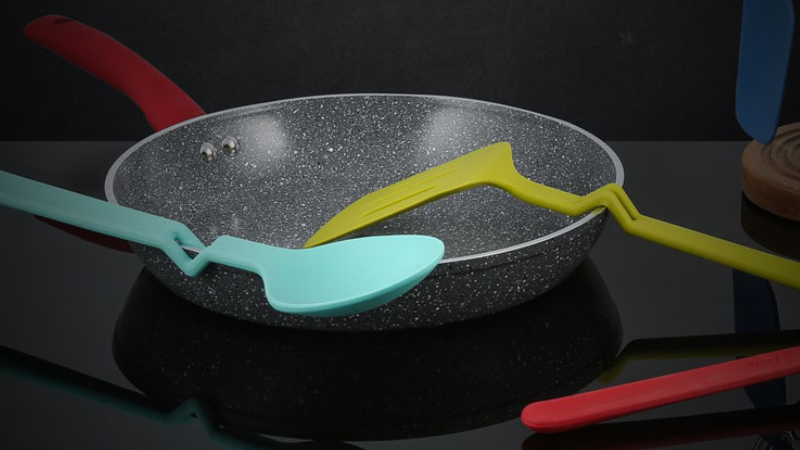
1. Are Silicone Cooking Utensils Safe?
The FDA approves food-grade silicone to be safe for use with food. Silicone is almost inert and does not interact with your food. Also, even at a high temperature, it does not produce hazardous fumes, making it ideal for storing and cooking food. However, it is essential to note that not all silicone is safe for use with food. For example, silicone utensils containing additives and fillers are harmful to health. They also break down at high temperatures, contaminating your food.
2. Which is Better, Nylon or Silicone Cooking Utensils?
It depends. If you are looking for cheap cooking utensils, nylon is more inexpensive than silicone. However, these kitchen utensils melt at high temperatures, releasing toxic substances into your food. Silicone utensils, on the other hand, are non-stick, heat-resistant, and do not leach into your food.
3. Is it Better to Cook with Silicone or Metal Utensils?
Silicone kitchen utensils are better for cooking than metal utensils. Metal utensils leach into food and are abrasive, scratching your cookware. In contrast, silicone cookware utensils are non-abrasive, stable, and have hard stains. You can use your silicone cookware for as long as possible without worrying about it leaching into your food.
4. What Happens When Silicone Gets Hot?
Silicone does not lose its mechanical and chemical properties when it gets hot. However, this material becomes brittle at extreme temperatures exceeding 220 degrees Celsius. Fortunately, you don’t have to worry about that with your silicone cookware. The highest cooking temperature for poultry and meat stuffing should be 75 degrees Celsius.
On the other hand, a moderate temperature is about 180 – 190 degrees Celsius in the oven, while a hot oven is about 200 – 230 degrees Celsius. Therefore, it is essential not to go above the bakewares range.
5. Which is Safer, Wood, or Silicone Cooking Utensil?
Both wood and silicone cooking utensils are safe for cooking since they don’t leach into food. However, wood utensils catch color and are more challenging to maintain. Silicone utensils, on the other hand, are stain-resistant, easy to clean, and do not pick up food smell.
6. What are the Cons of Silicone Cooking Utensils?
Although they provide numerous benefits, silicone cookware still has its disadvantages. A downside of silicone cooking utensils is that they are prone to scratching. Therefore, avoid using steel wool or metal sponges when cleaning them. In addition, do not use your cookware as a surface for cutting food with knives. Another downside is their flexibility.
While this is an excellent property, it makes spilling food exceptionally easy. When carrying food in your silicone cookware, it is best to place it on a plate. You should also remove the bakeware from the oven using an oven mitt. Furthermore, recycling silicone can be expensive. Therefore, special recycling centers are necessary to remold this material into other products.
Send Your Inquiry Now!
Quality Meets Affordability. Inquire Now for High-Quality Products at Low Volumes.
Conclusion
Silicone utensils and bakeware offer numerous advantages. They are stain-resistant, durable, and cost-effective. Nevertheless, before choosing silicone bakeware, it is ideal to look for FDA approval and fillers. Substandard silicone utensils are unsafe.
Furthermore, silicone cookware has longer lifespans than aluminum and stainless steel cookware. Nevertheless, you must take proper care of your cooking utensils to ensure they last as long as possible.
Get 100% Silicone Products From Hongju!
At Hongju, our reputation precedes us. As a leading manufacturer of rubber products with over two decades of experience, we have a catalog of satisfied clients and high-quality silicone products. Furthermore, our products, from o-rings to gaskets, speak for themselves because of our work ethic and integrity.
We work with you to produce FDA-compliant, custom silicone products in the shortest possible time. In addition, you can check our blog for more resources on silicone rubber products. Kindly reach out to us today!